Mr Spock
demokratischer - sektor
- Μηνύματα
- 18.892
- Reaction score
- 52.974
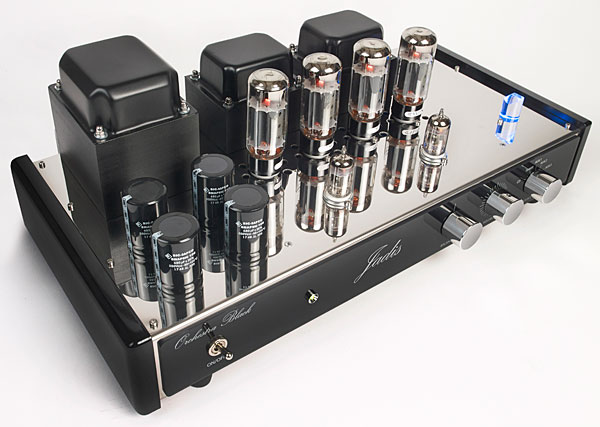
Like the Jadis Orchestra Reference MkII, the Orchestra Black is an integrated amp that uses two 6CA7/EL34 power pentodes per side, in push-pull, to produce 40Wpc in class-AB. Those pairs of output tubes are driven by a single 12AX7 dual-triode tube per channel. Upstream from the tubes, a single NPN transistor per channel (a 2N1711 in a TO-39 case) provides voltage gain. The output tubes are operated in fixed-bias mode: Each one has its own trim pot for adjusting the DC voltage applied to its signal grid, and each cathode is connected straight to ground. (Contrast that with the use of a 1 ohm cathode resistor, the presence of which allows for easier adjustment of bias current: With 1 ohm in the circuit, volts and amperes are equivalent.) For that reason, and because the amplifier's enclosure is the very devil to open—to do so requires the removal of 13 hex-head bolts, 10 screws, four feet, and one wooden end cap—adjusting bias, as is required when changing tubes, is best left to a qualified technician. And that would seem to cast a slight pall on the idea of tube-rolling, at least as far as the output tubes are concerned. (The amp arrives prebiased for the supplied tubes, the individual boxes for which are labeled in accordance with the tubes' positions.)
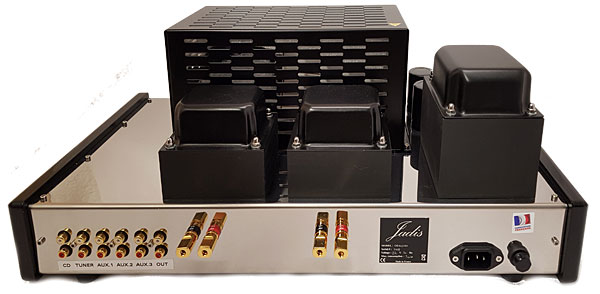
Happily, those and similar sounds became more listenable after my first week of daily listening with the Orchestra Black. During that time, I ran it in by playing background music (while I edited other people's copy). Then, while playing the new Blue Note Tone Poets LP reissue of Lee Morgan's Cornbread (Blue Note/Music Matters BST 84222), there came a surprisingly sudden moment when the notes I was hearing simply refused to be ignored: Muzak time was over as the Jadis grabbed my ears and said, "Listen to the timing of [bassist] Larry Ridley! Do you hear the subtle tension he's putting into every line of this bossa nova beat?" It was true—as were the physical presence and tonal beauty of Morgan's trumpet. The Orchestra Black's sound and its music-making abilities both made the leap from pretty decent to wow
volume control set to maximum, frequency response at 2.83V into: simulated loudspeaker load (gray), 8 ohms (left channel blue, right red), 4 ohms (left cyan, right magenta), 2 ohms (red) (2dB/vertical div.).
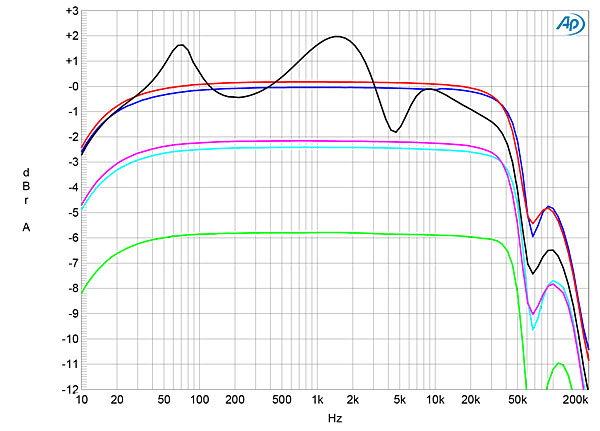
THD+N (%) vs frequency at 2.83V into: 8 ohms (left channel blue, right red), 4 ohms (left cyan, right magenta), 2 ohms (gray).
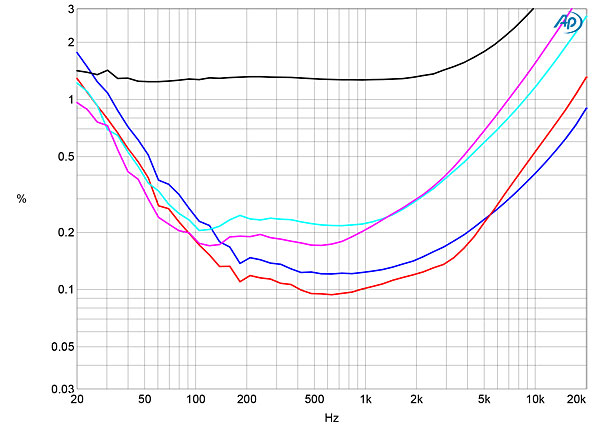
Conclusions
My fondness for the performance of the more expensive Jadis Orchestra Reference MkII is a matter of record—and I enjoyed the sound of the less expensive Orchestra Black at least as much. As to whether the new model sounds distinctly and decisively better than the old, I can't say, as I didn't have them here at the same time for a head-to-head comparison. Were note attacks a hair more crisply precise through the Black—and was its sound just a shade more textured (realistically, pleasantly so)? Maybe
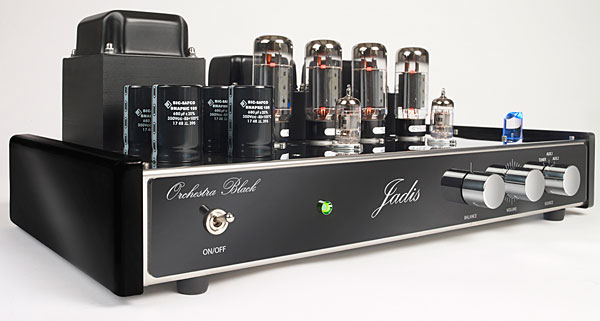
Jadis Orchestra Black integrated amplifier
I am the world's worst consumer. Not only have I made more than my share of disastrous purchase decisions, I'm also inexplicably luckless: If there's one defective sample or repack in an inventory, it will find me.
SPECIFICATIONS
| Type | Integrated amplifier with optional remote control |
|---|---|
| Bias | fixed - has to be adjusted when tubes are changed |
| Power | 40W class-B |
| Input type | 5 line input |
| Bandwidth | 5Hz to 60kHz @-3dB |
| Sensibility | 250mV |
| Number of blocks | 1 |
| Tubes list | 4 x EL34 2 x ECC83 |
| Dimensions | 53x27x20 cm |
| Weight | 20 kg |
| Consumption | 300W |
Tube Integrated Amplifiers ORCHESTRA Black Silver Jadis Electronics
Details and specifications : Tube Integrated Amplifiers ORCHESTRA Black Silver Jadis Electronics
. . . με dynaudio & harbeth τα δοκιμάζει . . . ώχ , , , κουκλί πάντως ο ενισχυτής


